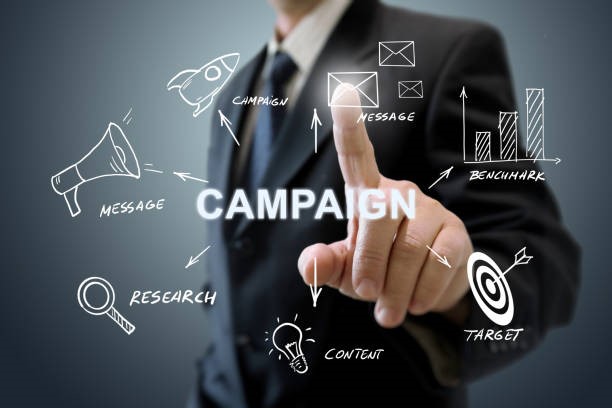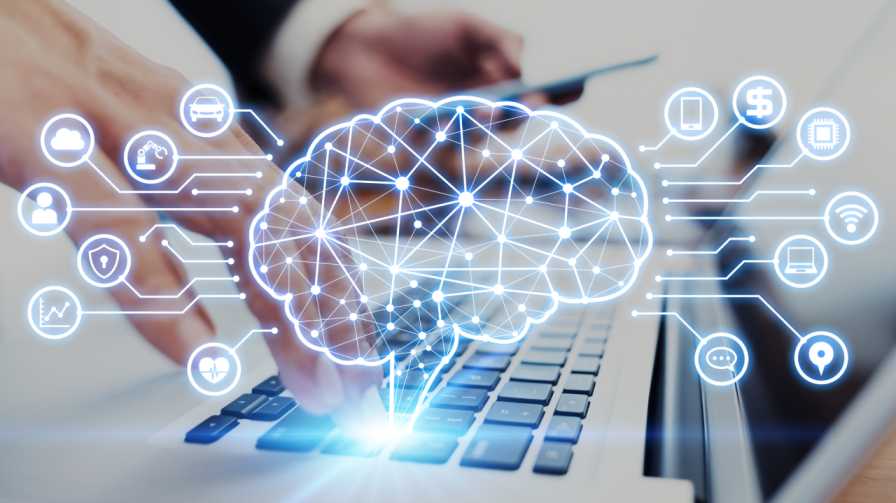In an era where digital transformation is revolutionizing industries, public relations (PR) is no exception. The integration of Artificial Intelligence (AI) into PR strategies is enhancing the effectiveness and precision of campaigns. AI’s ability to analyze vast amounts of data and generate insights is particularly valuable for improving campaign targeting and segmentation. This article explores how AI can enhance PR campaigns, focusing on targeting and segmentation to achieve optimal results.
What is PR Campaign Targeting?
PR campaign targeting involves identifying and reaching out to specific audiences who are most likely to be interested in a company’s message or product. Effective targeting ensures that the right message reaches the right people at the right time, maximizing the impact of the campaign.
What is PR Campaign Segmentation?
Segmentation is the process of dividing a broader audience into smaller, more manageable groups based on specific criteria such as demographics, interests, or behaviors. This allows PR professionals to tailor their messages to resonate more effectively with each segment, improving engagement and outcomes.
The Role of AI in PR
Data Analysis and Insights
AI can process and analyze vast amounts of data far more efficiently than humans. This capability allows PR professionals to gain deeper insights into audience behavior, preferences, and trends, facilitating more informed decision-making.
Predictive Analytics
AI’s predictive analytics capabilities enable PR teams to anticipate audience responses and trends. By analyzing historical data and identifying patterns, AI can predict future behaviors, helping to refine targeting and segmentation strategies.
Natural Language Processing (NLP)
NLP allows AI to understand and interpret human language. In PR, NLP can be used to analyze media coverage, social media conversations, and other textual data to gauge public sentiment and identify emerging issues or opportunities.
Automation
AI can automate repetitive tasks such as media monitoring, reporting, and even content creation. This allows PR professionals to focus on more strategic activities, enhancing the overall efficiency of PR campaigns.
How AI Enhances Targeting in PR Campaigns
Audience Analysis
AI can analyze various data sources to create detailed audience profiles. These profiles include demographic information, interests, online behavior, and purchasing patterns, helping PR professionals understand their target audience better.
- Demographic Analysis: AI can segment audiences based on age, gender, location, income, and other demographic factors.
- Behavioral Analysis: AI can track and analyze online behavior, including website visits, social media interactions, and purchase history.
- Interest Analysis: AI can identify audience interests by analyzing the content they engage with online.
Precision Targeting
By leveraging AI, PR professionals can achieve more precise targeting. AI algorithms can identify the most relevant audience segments and determine the best channels and times to reach them.
- Channel Optimization: AI can identify which channels (e.g., social media, email, news outlets) are most effective for reaching specific audience segments.
- Timing: AI can analyze data to determine the optimal times to release content or make announcements for maximum impact.
- Message Personalization: AI can tailor messages to individual audience members based on their preferences and behavior, increasing engagement and response rates.
Real-Time Adjustments
AI enables real-time adjustments to targeting strategies based on ongoing campaign performance. This dynamic approach ensures that PR efforts remain effective and relevant throughout the campaign lifecycle.
- Performance Monitoring: AI can continuously monitor campaign performance and provide real-time feedback.
- Adaptive Targeting: AI can adjust targeting strategies in response to performance data, ensuring optimal results.
- Crisis Management: AI can detect potential PR crises early and help mitigate their impact by adjusting targeting and messaging strategies.
How AI Enhances Segmentation in PR Campaigns
Advanced Segmentation Techniques
AI can implement advanced segmentation techniques that go beyond traditional methods. These techniques consider a wider range of factors and interactions to create more accurate and meaningful segments.
- Psychographic Segmentation: AI can analyze personality traits, values, and lifestyles to segment audiences based on their psychological attributes.
- Behavioral Segmentation: AI can track and analyze user behavior across multiple touchpoints to create segments based on behavior patterns.
- Contextual Segmentation: AI can consider the context in which audiences interact with content, such as the time of day, device used, or location.
Dynamic Segmentation
AI enables dynamic segmentation, where audience segments are continuously updated based on new data. This ensures that segments remain relevant and accurate over time.
- Real-Time Data Integration: AI can integrate real-time data from various sources to update audience segments continuously.
- Adaptive Segments: AI can automatically adjust segment definitions based on changing audience behavior and preferences.
- Context-Aware Segmentation: AI can adapt segments based on the context of audience interactions, providing more relevant insights.
Enhanced Personalization
AI-driven segmentation allows for more personalized PR campaigns. By understanding the unique characteristics and preferences of each segment, PR professionals can tailor their messages and strategies to resonate more effectively.
- Customized Content: AI can generate personalized content for each audience segment, increasing engagement and relevance.
- Targeted Messaging: AI can tailor messages to align with the interests and preferences of each segment.
- Personalized Engagement: AI can identify the best ways to engage with each segment, whether through social media, email, or other channels.
Implementing AI in PR Campaigns
Data Collection and Integration
The first step in implementing AI in PR campaigns is collecting and integrating relevant data. This includes data from social media, website analytics, CRM systems, and other sources.
- Data Sources: Identify and integrate data from various sources, including social media, web analytics, CRM systems, and third-party data providers.
- Data Cleaning: Ensure data is clean and accurate by removing duplicates, correcting errors, and standardizing formats.
- Data Integration: Integrate data from different sources to create a comprehensive view of the audience.
Selecting AI Tools and Platforms
There are various AI tools and platforms available for PR professionals. Selecting the right tools depends on the specific needs and goals of the campaign.
- AI Analytics Tools: Choose AI analytics tools that can process and analyze large datasets to generate insights.
- NLP Tools: Select NLP tools that can analyze text data, such as social media posts and news articles, to gauge public sentiment and identify trends.
- Automation Tools: Use AI automation tools to streamline repetitive tasks such as media monitoring and reporting.
- Personalization Tools: Implement AI tools that can personalize content and messaging based on audience data.
Developing AI Models
Developing AI models involves training algorithms on relevant data to enable accurate predictions and insights. This requires collaboration between PR professionals and data scientists.
- Training Data: Collect and prepare training data that represents the audience and behaviors of interest.
- Model Training: Train AI models on the data to identify patterns and make predictions.
- Model Validation: Validate AI models to ensure they are accurate and reliable.
Integrating AI into PR Workflows
Once AI models are developed, they need to be integrated into PR workflows. This involves incorporating AI-driven insights and automation into daily PR activities.
- Insight Integration: Integrate AI-generated insights into campaign planning and execution.
- Automation Integration: Use AI automation tools to streamline repetitive tasks and free up time for strategic activities.
- Continuous Improvement: Continuously monitor and refine AI models and workflows to improve accuracy and effectiveness.
Challenges and Considerations in Using AI for PR
Data Privacy and Security
Using AI involves handling large amounts of data, raising concerns about privacy and security. PR professionals must ensure they comply with data protection regulations and implement robust security measures.
- Compliance: Ensure compliance with data protection regulations such as GDPR and CCPA.
- Data Security: Implement security measures to protect sensitive data from breaches and unauthorized access.
- Ethical Considerations: Consider ethical implications of using AI and ensure transparency in data usage.
Accuracy and Reliability
AI models are only as good as the data they are trained on. Ensuring the accuracy and reliability of AI predictions requires high-quality data and continuous model validation.
- Data Quality: Ensure data is accurate, complete, and representative of the audience.
- Model Validation: Continuously validate and refine AI models to maintain accuracy and reliability.
- Bias Mitigation: Address potential biases in AI models to ensure fair and unbiased predictions.
Integration with Human Expertise
AI should complement, not replace, human expertise. PR professionals must strike a balance between leveraging AI capabilities and applying their own knowledge and experience.
- Human Oversight: Ensure human oversight in AI-driven processes to validate insights and make strategic decisions.
- Collaboration: Foster collaboration between PR professionals and data scientists to optimize AI implementation.
- Skill Development: Invest in training and skill development to equip PR professionals with the knowledge to work effectively with AI.
Future Trends in AI-Driven PR
AI-Powered Content Creation
AI is increasingly being used to generate content, from news articles to social media posts. AI-powered content creation can enhance PR campaigns by producing relevant and engaging content at scale.
- Automated Writing: AI can generate news articles, blog posts, and other written content.
- Social Media Posts: AI can create and schedule social media posts tailored to audience preferences.
- Visual Content: AI can create visual content such as infographics and videos.
Sentiment Analysis and Emotion Detection
AI’s ability to analyze sentiment and detect emotions can provide deeper insights into public perception and engagement. This can inform more effective targeting and messaging strategies.
- Sentiment Analysis: AI can analyze text data to determine public sentiment towards a brand or topic.
- Emotion Detection: AI can detect emotions in text and voice data, providing insights into audience reactions.
- Trend Identification: AI can identify emerging trends and issues based on sentiment and emotion analysis.
Voice and Conversational AI
Voice and conversational AI, such as chatbots and virtual assistants, are becoming more prevalent in PR. These technologies can enhance engagement and provide personalized interactions with audiences.
- Chatbots: AI-powered chatbots can handle customer inquiries and provide information in real-time.
- Virtual Assistants: Virtual assistants can engage with audiences through voice interactions, offering a more personalized experience.
- Voice Search Optimization: Optimizing content for voice search can improve discoverability and engagement.
AI-Driven Influencer Marketing
AI can enhance influencer marketing by identifying the most relevant influencers and predicting their impact on campaigns. This can improve the effectiveness of influencer partnerships.
- Influencer Identification: AI can analyze social media data to identify influencers who align with the brand’s target audience.
- Impact Prediction: AI can predict the potential impact of influencer partnerships based on historical data.
- Campaign Optimization: AI can optimize influencer marketing campaigns by identifying the best content, timing, and channels.
Integration with AR and Virtual Reality
AI can be integrated with AR and VR technologies to create immersive and interactive PR experiences. This can enhance engagement and provide unique opportunities for audience interaction.
- AR Experiences: AI can enhance AR experiences by providing real-time data and personalization.
- VR Experiences: AI can create immersive VR experiences that engage audiences in new and innovative ways.
- Interactive Campaigns: AI-driven AR and VR campaigns can offer interactive and personalized experiences that resonate with audiences.
Conclusion
AI is transforming the way PR campaigns are targeted and segmented, offering unprecedented opportunities for precision and effectiveness. By leveraging AI’s capabilities in data analysis, predictive analytics, and automation, PR professionals can achieve more accurate targeting and segmentation, leading to improved campaign outcomes. However, it is essential to address challenges related to data privacy, accuracy, and integration with human expertise to fully realize the potential of AI in PR.
Agencies like Mogul Press PR Agency are at the forefront of this transformation, utilizing AI to enhance their PR strategies. According to Mogul Press reviews, their approach to integrating AI has resulted in more effective and impactful campaigns. As AI continues to evolve, its role in PR will only become more significant, driving innovation and setting new standards for campaign targeting and segmentation.



2 thoughts on “How Can AI Improve PR Campaign Targeting and Segmentation?”